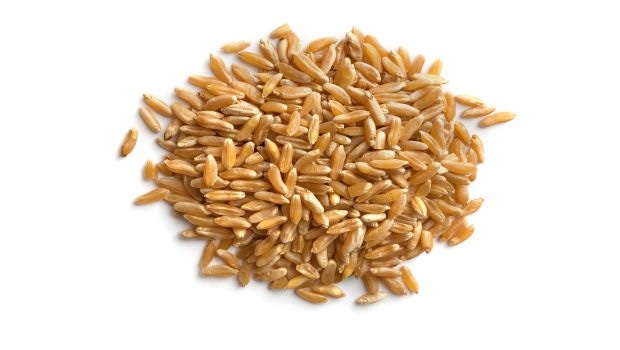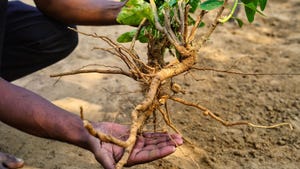Khorasan Wheat Improves Blood Insulin, Glucose in Diabetics
A diet rich in khorasan wheat products may improve blood insulin and glucose in diabetics, according to a new study published in The European Journal of Nutrition. The findings also suggest ancient khorasan wheat may reduce the potential risk of vascular complications in Type 2 diabetes patients.

A diet rich in khorasan wheat products may improve blood insulin and glucose in diabetics, according to a new study published in The European Journal of Nutrition. The findings also suggest ancient khorasan wheat may reduce the potential risk of vascular complications in Type 2 diabetes patients.
Researchers at the University of Florence and the Careggi University Hospital of Florence investigated whether a replacement diet with products made with organic ancient khorasan wheat could provide additive protective effects in reducing glucose, insulin, lipid and inflammatory risk factors, and in restoring blood redox balance in Type 2 diabetes mellitus (T2DM) patients compared to diet with product made with modern organic wheat.
In the study, two different kinds of products were supplied to volunteers with type 2 diabetes— products made from ancient KAMUT® wheat and products made from modern wheat. Both the ancient wheat and modern wheat were grown organically. The study design was a randomized, double blind, crossover trial with two intervention phases. Each participant was required to eat both the ancient and the modern wheat, but in two different time periods of eight weeks. Neither the participants nor the doctors knew what kind of wheat was eaten during each time period, and participants were not permitted to eat other wheat products during this time. They were instructed not to alter their dietary or lifestyle habits, nor change any use of medications they were taking. There was a washout period of eight weeks between the two trial periods. Blood analyses were performed at the beginning and at the end of each trial period.
The nutritional analysis found major differences between flour made with ancient KAMUT khorasan wheat and modern wheat. A significantly higher antioxidant content (polyphenols and selenium), and a higher antioxidant power were found in the ancient wheat flour with respect to the modern wheat flour, as well as higher levels of minerals like magnesium, phosphorus, potassium, and zinc. Regarding the blood analysis, consumption of products made from KAMUT wheat produced a significant improvement in several key markers in the blood, such as total cholesterol (-3.7 percent), LDL-cholesterol (-3.4 percent), glucose (-9.1 percent) and insulin (-16.3 percent), independent from age, sex, traditional risk factors, medication and eating habits. No significant effect was noted after the consumption of the modern wheat diet.
Other results indicated a better antioxidant status after the consumption of the KAMUT wheat products compared to a significant decrease after the consumption of modern wheat products. A significant decrease in inflammatory markers was seen after eating the KAMUT wheat products compared to a significant increase in inflammatory markers after eating modern wheat products. This is important as it may lead to the reduction of further vascular complications. It is also interesting to note that although all patients were on effective glucose lowering therapies, there was still an additional significant improvement in risk factors when a KAMUT wheat diet was compared to a modern wheat diet.
In a previous study about cardiovascular disease, it was shown that a KAMUT wheat based-diet was able to reduce cholesterol, blood glucose, markers of inflammation, and increase antioxidant activity. Given that diabetics have increased cardiovascular risk, the aim of the present study was to investigate whether a replacement diet with products made from ancient KAMUT wheat could provide additive protective effects to these people. This study further confirms that it does, and also confirms the previous research demonstrating the health-promoting benefits of organic ancient KAMUT wheat, not seen in organic modern wheat.
Check out INSIDER’s “Whole and Ancient Grains: From Amaranth to Zizania" Slide Show to find out why whole grains, whether familiar whole wheat and brown rice or so-called ancient grains, such as quinoa, amaranth and spelt, are becoming a popular way to add health and appeal to everything from breads, breakfast cereals, soups and some gluten-free products.
About the Author(s)
You May Also Like






.png?width=800&auto=webp&quality=80&disable=upscale)